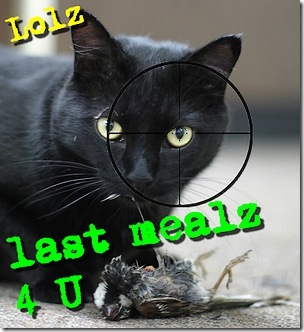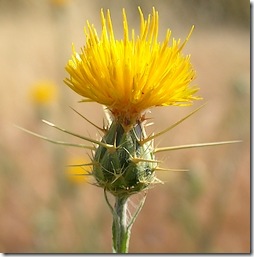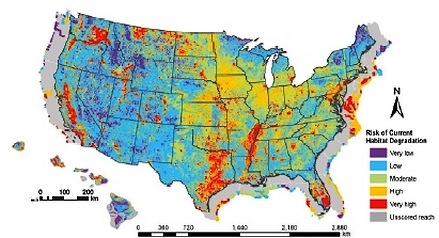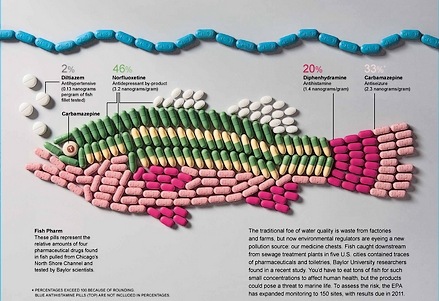 I’ll confess to a morbid fascination with the larger invasive species issue, I spend far too much time reading about all the horrors headed our way.
I’ll confess to a morbid fascination with the larger invasive species issue, I spend far too much time reading about all the horrors headed our way.
With national parks mulling all manner of restrictions, before banning humans outright, it’s indicative of a war against an enemy that can’t be beaten.
Just insert “seed” for diatom, and you’ll understand why your narrow ass is completely toxic to native flora and fauna. You’re carrying hundreds of them in the folds of your shirt, pressed into the bills of your wallet, stuck to your rubber shoe soles, imbedded in hair, mouth, and anything else that has direct contact with the atmosphere.
As we’ve demonstrated so many times before, the pendulum will swing far past intelligent, until we get into the truly rarified spaces. Our good intentions morphed into some sort of foreign plant Jihad, that’ll spread into secondary markets and accomplish little other than to anger everyone.
… but the idea of ballistic husbandry, to allow me to rid my yard of my neighbor’s furry passions, and the hides that will result, that I will not curse.
… yea, that’s right, were going to put “rabbit” back on the menu.
A lifetime of uncaring neighbors loosing “TinkerBelle” to crap wantonly anywhere she feels like it, lay waste to any birds I may have sheltered through the winter, and scent my mornings with the penetrating aroma of cat urine…
… you little furry Motherfu**er, them days is over. You’re going to rediscover camouflage and stealth, leave the quail in my yard alone, or I’m blowing daylight through all that Purina.
Biologists claim that domestic and feral cats are an invasive threat that along with store bought exotic plants, reduce the meager Big City green belts ability to compete with all those discarded invasive plants.
New Zealand and Australia already allow hunting of feral cats, but our domestic population is still killing about 500,000,000 birds per year, which compounds the problem of city blight, whose meager green belts are filling up with invasive plants those missing birds might have found delicious.
Household cats were introduced in North America by European colonists; they are regarded as an invasive species and have few natural enemies to check their numbers. “They are like gypsy moths and kudzu — they cause major ecological disruption,” Dr. Marra said.
– via the NY Times
It’s still comforting to know that once we get a ways down this path, absolutely everyone will be pissed off, not a single invasive will have been diminished, and the cops will be plying the billy club to old Missus McGillicutty whose got a death grip on Cho-Cho, despite the city ordinance to the contrary.
“Salad Days” for the fly tying community coming, with a goodly chunk of Maltese making up for the lack of Eastern Cottontail.
 The famous “fly eating bush” – nemesis of the western fly fishermen, appears to have a long and illustrious future should global warming descend on us in all its projected fury …
The famous “fly eating bush” – nemesis of the western fly fishermen, appears to have a long and illustrious future should global warming descend on us in all its projected fury …
 I remember the elevated tempers and harsh language when they contemplated NAFTA, the North American Free Trade Agreement. Senators would pound fist on podium insisting it wasn’t fair to us and how the abolished tariffs and transparent borders would benefit our neighbors much more than ourselves.
I remember the elevated tempers and harsh language when they contemplated NAFTA, the North American Free Trade Agreement. Senators would pound fist on podium insisting it wasn’t fair to us and how the abolished tariffs and transparent borders would benefit our neighbors much more than ourselves.
 In a little “tea-party” muscle flexing, scientists from Sarah Palin’s home state
In a little “tea-party” muscle flexing, scientists from Sarah Palin’s home state 

 I missed the third digit of the snowpack measurement yet instinctively I knew it really didn’t matter. Three digits means a repeat of last year’s watery excesses, and while I resolved myself to keep working on the dry flies like I’d planned, they were unlikely to see much action.
I missed the third digit of the snowpack measurement yet instinctively I knew it really didn’t matter. Three digits means a repeat of last year’s watery excesses, and while I resolved myself to keep working on the dry flies like I’d planned, they were unlikely to see much action.  I’ll confess to a morbid fascination with the larger invasive species issue, I spend far too much time reading about all the horrors headed our way.
I’ll confess to a morbid fascination with the larger invasive species issue, I spend far too much time reading about all the horrors headed our way.
